Why Reciting Buddhist Sutras Out Loud is Important; Sutras Help Us Remain Mindful of the Teachings and Disengage the “Clinging” Conscious Mind
In many Buddhist disciplines we are taught to value the meritorious practice of reciting sutras. Often this is done from memory, in a mantra-like chant, which begs the question why do we recite sutras?
A Buddha Weekly Special Feature
Sutras are the teachings of the Buddha. To speak them is to put us in touch with Buddha’s enlightened understanding and to connect our consciousness with the seeds for our own ultimate enlightenment. Of course, some practitioners drop the practice because they believe it has become too robotic, without meaning, chanted so fast that we’re not really absorbing the “message”; but that isn’t the point of recitation. Even if the conscious mind is not directly connecting with the “repetitive chant” the subconscious certainly is. And, many believe the subconscious is where the seeds of enlightenment flourish first.

Hakuun Yasuntani Roshi explains: “There are three reasons why we recite sutras. First, we recite them to make an offering to Buddhist patriarchs; second, to create a noble relationship with all beings; third, to unite these first two actions with our Buddhist training.” [1]
Sutras Help Disengage the “Bogged Down” Conscious Mind
The conscious mind is often bogged down with daily stress, the struggle to survive, the latest gossip at work, the need to pay the mortgage, and a thousand other anchors that create barriers to our need for spiritual fulfillment. We seek to still the mind with meditation, sutra recitation, prayer, communing with the Sangha and many other methods. Meditation, if done correctly, can still the mind, allowing the daily battle to survive to fall away sufficiently to allow us to contemplate the teachings of Buddha.
Reciting sutras daily, like mantra practice, can help us relieve daily stress, focus on the teachings, and plant the seeds of Enlightenment in our subconscious.
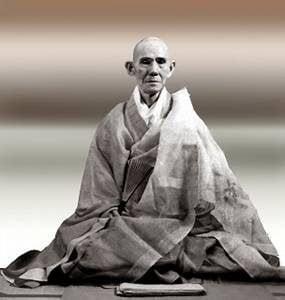 Hakuun Yasuntani Roshi explains: We recite sutras before others as an education of their subconscious minds. On the surface, it may seem that effectiveness of teaching is limited by the extent of understanding. So, it may be thought, if we read difficult sutras, they will have no effect. However, only people who do not understand the power and subtlety of the subconscious hold such an opinion. If you have studied only a little about the subconscious, you will know that even though you do not grasp meaning with your conscious mind, you may understand very clearly with your subconscious. Or, if you do not get any conscious impression, you may already have a subconscious impression. Moreover, you will know, if you have studied the matter, that our conscious mind is influenced by our subconscious; indeed, that our subconscious operates absolute control over our character.”
Hakuun Yasuntani Roshi explains: We recite sutras before others as an education of their subconscious minds. On the surface, it may seem that effectiveness of teaching is limited by the extent of understanding. So, it may be thought, if we read difficult sutras, they will have no effect. However, only people who do not understand the power and subtlety of the subconscious hold such an opinion. If you have studied only a little about the subconscious, you will know that even though you do not grasp meaning with your conscious mind, you may understand very clearly with your subconscious. Or, if you do not get any conscious impression, you may already have a subconscious impression. Moreover, you will know, if you have studied the matter, that our conscious mind is influenced by our subconscious; indeed, that our subconscious operates absolute control over our character.”
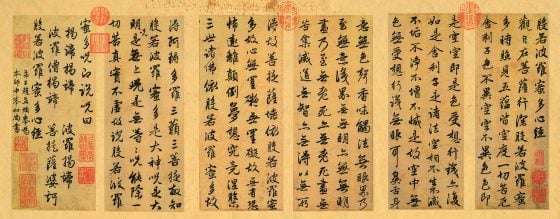
Sutras Help Us Understand
The teachings of the Buddha are vast and limitless. All sutras are profound. Some, such as the most popular sutra of all time[4], the Mahayana Heart Sutra (Prajnaparamitahdaya, or Heart of the Perfection of Understanding) teach us the very nature of true reality. The mantra gate gate pāragate pārasaṃgate bodhi svāhā is often recommended as a daily recitation, as it contains some of the most profound lessons of the Buddha.
gate gate pāragate pārasamgate bodhi svāhā
The 14th Dalai Lama explains the mantra as: “go, go, go beyond, go thoroughly beyond, and establish yourself in enlightenment.” [3]
The shortest version of the Heart Sutra, only 16 lines, contains profound, thought-provoking concepts, perhaps the clearest explaination of “emptiness. Reciting the entire short sutra over and over is considered to be a method that, ultimatley, helps plant the seeds of understanding. The most famous passage (here the version translated by the great Zen master Thich Nhat Hanh, is;
“Listen Sariputra, this Body itself is Emptiness and Emptiness itself is this Body. This Body is not other than Emptiness and Emptiness is not other than this Body. The same is true of Feelings, Perceptions, Mental Formations,and Consciousness.
“Listen Sariputra, all phenomena bear the mark of Emptiness; their true nature is the nature of no Birth no Death, no Being no Non-being, no Defilement no Purity, no Increasing no Decreasing.”
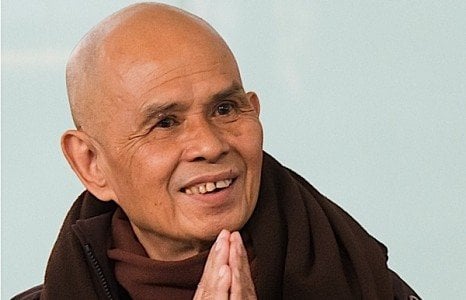
Sutras Help Us Remain Mindful of the Teachings
In a more direct way, actively contemplating sutras helps us remain mindful of the teachings. Even if we’ve recited them so many thousands of times that they become robotic, the practice of actively repeating the teachings is, in some ways, the ultimate “mindfulness practice” — where we stay mindful of the teachings. The sutra teachings can be likened to planting seeds, while watering those seeds is analogous to the daily recitation of the sutra.
But what to do if it becomes too robotic, almost to the point where the conscious mind grumbles and complains. The rational conscious mind tends to complain about little things like daily offerings, prayers and sutra recitations. It’s easy to dismiss these practices after a time if they appear to be less meaningful, or too “robotic.”

Recite the Sutra, Rather Than Read Them
Some of the keys to retaining the conscious mind’s engagement with sutras is to recite them, rather than read them. To recite them in your native language rather than the original language will also keep the mind engaged. Some teachers, however, would argue that allowing the mind to become disengaged is the point. As with mantra practice, repeated sutra recitation in Tibetan, Sanskrit or Pali, ultimately from memory, can allow the conscious mind to detach, one of the goals of mindfulness.
There is also comfort in the sutras. In times of stress, when the conscious mind can’t cope, reciting a sutra, mentally or aloud, can bring instant comfort and strength.
The words are then linked to daily practice—and don’t kid yourself, daily recitation of a sutra will cause the teachings to become part of your daily life over time. Repeated sutra recitation does tend to encourage daily practices of generosity and merit.
Effectiveness and Progress Towards Enlightenment
Sutra recitation is considered the equal of zazen meditation by many Zen Buddhists. It is considered a “must” for Mahayana practitioners, especially monks. It is considered a remedy by many teachers, who “prescribe” the recitation of sutras for various situations. (For example, Lama Zopa regularly recommends sutra recitations to his student in his online “Advice Book,” such as the recitation of Golden Light Sutra (Suvarṇaprabhāsa Sūtra) to create the merit for world peace. [2])
Hakuun Yasuntani Roshi explains why sutra recitation is the equal of zazen: “At the same time, there is also a great difference in effectiveness in the third aspect of sutra recitation. This third element is this: if you recite sutras with great energy and single-mindedness frequently, then your own samadhi power will be strengthened and you will have a good chance for satori. Or, if you have already awakened, your satori will shine more brilliantly in your character and act more effectively in your everyday life. The most important attitude in reciting sutras is to recite with your whole spirit.” [1]

Sutra as a Prescription
Reciting sutras creates merit in the mindstream of the student, helping us overcome the negative karmas which directly contribute to our negative situation. For example, a person with cancer might be experiencing the ripening of karma. Lama Zopa, a well known Tibetan teacher, recommends sutra recitation as remedy in his online advice book.
One student, with breast cancer, was advised by Lama Zopa: “Read the Vajra Cutter Sutra three times, however, your motivation should be not only for yourself, but for numberless sentient beings, to purify all their defilements and negative karma. There are numberless sentient beings who especially need to recite the Vajra Cutter Sutra precisely, so read it for them. There are many people with cancer who need the recitation of the Vajra Cutter Sutra, therefore, when you read it, think you are purifying and healing all those people who need it. Read it specifically for those with cancer, in order to heal their cancer.”
NOTES
[1] “Why do we recite Sutras”, thezensite.com by Hakuun Yasuntani Roshi, translated by Eido Tai Shamano Roshi and Robert Chotan Atken Roshi. https://www.thezensite.com/ZenTeachings/Teishos/Why_Do_We_Recite_Sutras.html
[2] Lama Zopa Rinpoche’s Online Advice Book https://www.lamayeshe.com/advice/lama-zopa-rinpoches-online-advice-book
[3] Discourse on the Heart Sutra, H.H. Dalai Lama
[4] Pine, 2004, see WIkipedia https://en.wikipedia.org/wiki/Heart_Sutra#cite_ref-Pine_16_1-0
4 thoughts on “Why Reciting Buddhist Sutras Out Loud is Important; Sutras Help Us Remain Mindful of the Teachings and Disengage the “Clinging” Conscious Mind”
Leave a Comment
More articles by this author

Mo Dice and Mo Mala, Bamboo Sticks, and other “divinations” — “Mo could prove beneficial…” HH Sakya Trizin
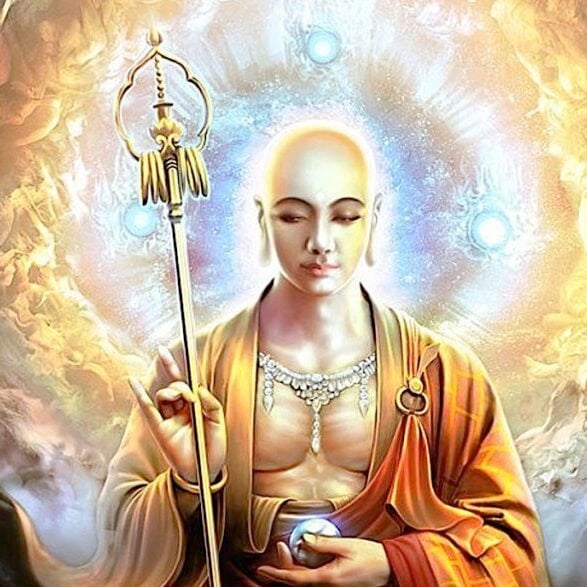
Lama Zopa Rinpoche and other teachers recommend Kṣitigarbha mantra and practice for times of disaster, especially hurricane and earthquake, because of the great Bodhisattva’s vow

Profound simplicity of “Amituofo”: why Nianfo or Nembutsu is a deep, complete practice with innumerable benefits and cannot be dismissed as faith-based: w. full Amitabha Sutra
Search
Latest Features
Please support the "Spread the Dharma" mission as one of our heroic Dharma Supporting Members, or with a one-time donation.
Please Help Support the “Spread the Dharma” Mission!

Be a part of the noble mission as a supporting member or a patron, or a volunteer contributor of content.
The power of Dharma to help sentient beings, in part, lies in ensuring access to Buddha’s precious Dharma — the mission of Buddha Weekly. We can’t do it without you!
A non-profit association since 2007, Buddha Weekly published many feature articles, videos, and, podcasts. Please consider supporting the mission to preserve and “Spread the Dharma." Your support as either a patron or a supporting member helps defray the high costs of producing quality Dharma content. Thank you! Learn more here, or become one of our super karma heroes on Patreon.
Josephine Nolan
Author | Buddha Weekly
Josephine Nolan is an editor and contributing feature writer for several online publications, including EDI Weekly and Buddha Weekly.











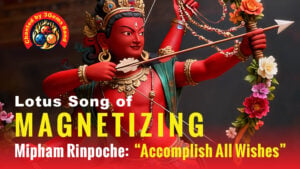
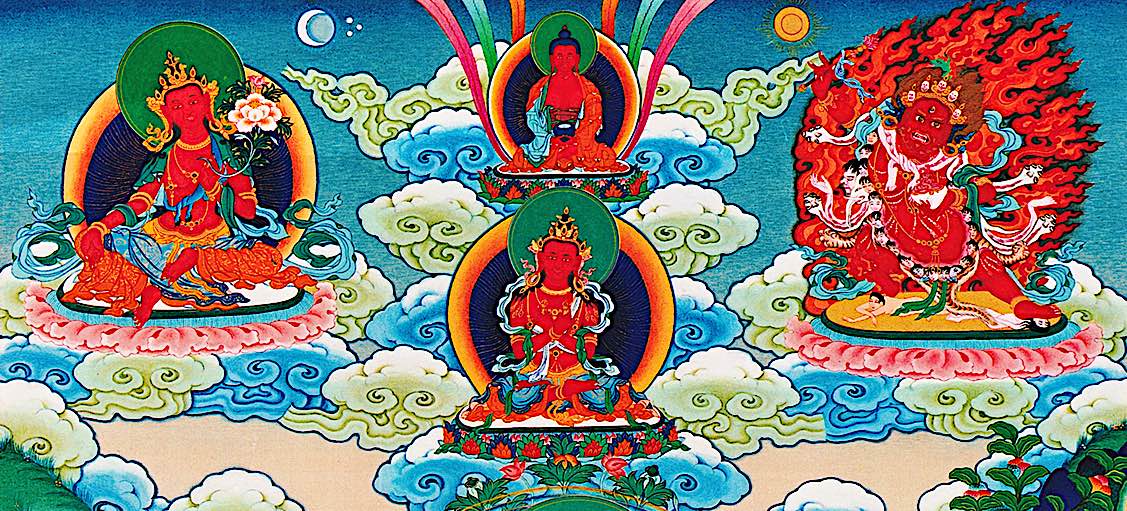



Thank you for those explanations. Very insightful!
Guided by the translator of The Flower Ornament Scripture (Avatamsaka Sutra) I recite on a daily basis. The benefits are constant and immediate, consciously and subconsciously. One reliable source has stated that after reciting the Avatamsaka Sutra three times each of the qualities described begin to manifest in the practitioner.
i need to read the article carefully, so i can assure myself of my daily practice; Paritta recitation
Very helpful to read before class tonight.